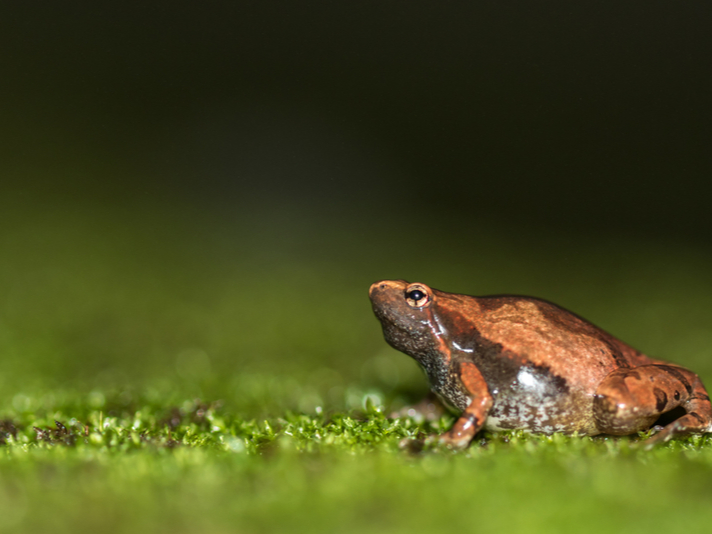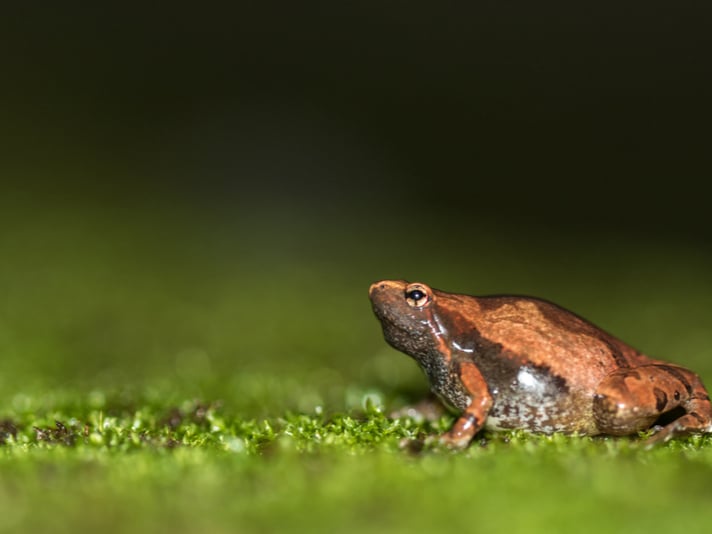6.9 percent of all frog species will go extinct over the next 100 years.
Frogs around the world are in danger of becoming extinct due to climate change, pollution and habitat destruction, according to a study published in the journal Proceedings of the National Academy of Sciences.

Bhavesh Rathod India/Shutterstock
The ornate narrow-mouthed frog is a species of frog found in South Asia.
Researcher John Alroy, an associate professor at Macquarie University's Department of Biological Sciences, and author of the study, has applied an “extremely conservative Bayesian method” to determine the number of amphibian and squamate extinctions in nine important tropical and subtropical regions around the world and has, based on his data, determined that of the herps of the world, frogs are the most negatively affected population wise. Alroy says that about 200 frog species (3.1 percent of all known frog species, or 6,355 known species) went extinct between 1960 and 1990 due in part to pollution and habitat destruction. Over the next century, 6.9 percent of all frog species will go extinct.
"That's pretty bad because if you project that forward for the next couple of centuries you end up with a percentage which would resemble a mass extinction," Alroy said. "Everything is getting worse for frogs," he said.
Alroy determined extinction rates of individual species by considering the sighting frequency of the species and the last sighting date, among other criteria. Alroy notes in his study that frog losses have been particularly heavy in Central America and Brazil, with many frog deaths attributed to the chytrid fungus (Batrachochytrium dendrobatidis). Other notable areas with significant declines in frogs are Papua New Guinea, which may be attributed to deforestation, and Madagascar, where he notes that 11 percent of frog species have gone extinct.
Alroy says that the rates of extinction are now four orders of magnitude higher than previous studies even without an acceleration in the growth of environmental threats that hasten extinction events.
Events that have negatively affected frog species around the world include climate change, deforestation, the introduction of invasive species, destruction of natural habitat, pollution, and of course disease such as the chytrid fungus.
An abstract of then study can be found on the PNAS website.
John Virata keeps a western hognose snake, a ball python, two corn snakes, a king snake, and two leopard geckos. His first snake, a California kingsnake, was purchased for $5. His first pet reptile was a green anole that arrived in a small box via mail order. Follow him on Twitter @johnvirata


